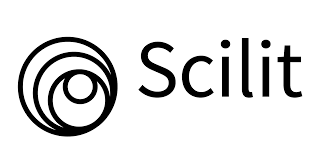Internal Communication in Building Organizational Culture at Pasarame Beachwalk Foodcourt
DOI:
https://doi.org/10.38043/commusty.v2i2.4904Keywords:
Internal Communication, Organizational Culture, Pasarame Beachwalk, Vertical Communication, Horizontal CommunicationAbstract
This research is motivated by an interesting phenomenon about communication patterns in a Pasarame Beachwalk Foodcourt. Especially to find out internal communication to build organizational culture at the Pasarame Beachwalk food court. Aims to describe and know Internal Communication in building organizational culture (Case study at Pasarame Beachwalk Foodcourt). The approach used by the author is a qualitative research method. Qualitative research methods use in-depth interviews, observation and documentation to participate in collecting data. Internal communication is divided into 2, namely vertical communication, namely communication patterns between superiors and subordinates and horizontal communication, namely communication between fellow staff and divisions or sections. The importance of communication in helping to facilitate work and to align the goals of the members, so that an organized organizational culture is formed in accordance with the vision and mission of the company. Organizational culture has several dimensions, namely Innovation and Risk Taking, Paying Attention to Details, Result Orientation, People Orientation, Team Orientation, Aggressiveness, Stability. Background and technical differences are the main obstacles that often occur. The results of the study show that maintained communication will help members to work more quickly and efficiently. And by maintaining both horizontal and vertical communication can minimize obstacles. From the dimensions of the existing organizational culture, Pasarame Beachwalk tends to have a result-oriented culture and pays close attention to details.
References
Anggito, A., & Setiawan, J. (2018). Metode Penelitian Kualitatif (Ella Deffi Lestari, Ed.). CV. Jejak.
Anggoro, S., Nurdin, D., & Sururi. (2023). Implementation of Leadership Strategy to Realize the Transformation Digital towards Smart Military University. Jurnal Pendidikan Dan Pengajaran, 56(3), 592–601. https://doi.org/10.23887/jpp.v56i3.66751
Fidyah, D. N., & Setiawati, T. (2019). Influence of Organizational Culture and Employee Engagement on Employee Performance: Job Satisfaction as Intervening Variable. Review of Integrative Business and Economics Research, 9(4), 64–81. www.telkom.co.id
Haryanto, R., Ekonomi, J., Islam, B., & Pamekasan, S. (2017). Urgensi Sumber Daya Insani Dalam Membentuk Budaya Kerja Islami.
Jujung, D. M., & Triwijayanti, D. (2016). Pengaruh Budaya Organisasi Dan Komunikasi Organisasi Terhadap Kinerja Karyawan Pt. X. BISMA – Bisnis Dan Manajemen, 8(2), 218–236.
Pramana, D., Armayanti, N., Irwansyah, & Tambunan, K. (2022). Budaya Organisasi (1st ed., Vol. 1). Merdeka Kreasi.
Saleh, M. (2016). Komunikasi dalam Kepemimpinan Organisasi. Tim UB Press.
Samuel, Setyadi, D., & Tricahyadinata, I. (2020). Pengaruh Budaya Organisasi Terhadap Komitmen Organisasional Afektif Yang Dimediasi Oleh Kepercayaan (Studi Pada Pt Trubaindo Coal Mining Kabupaten Kutai Barat).
Syakur, Abd., Susilo, T. A. B., Wike, W., & Ahmadi, R. (2020). Sustainability of Communication, Organizational Culture, Cooperation, Trust and Leadership Style for Lecturer Commitments in Higher Education. Budapest International Research and Critics Institute (BIRCI-Journal): Humanities and Social Sciences, 3(2), 1325–1335. https://doi.org/10.33258/birci.v3i2.980
Tejo, G. A., & Machasin. (2015). Pengaruh Kompetensi Dan Budaya Organisasi Terhadap Motivasi Kerja Serta Dampaknya Terhadap Kinerja Personil Bid. Humas Polda Riau. Jurnal Tepak Manajemen Bisnis, 7(3), 437–454.
Wijaya, S. (2022). Peran Budaya Organisasi Dalam Meningkatkan Retensi Karyawan. Jurnal Bina Manajemen, 11(1), 199–213.
Yani, D. A. (2021). Pengaruh Penghargaan Dan Budaya Organisasi Terhadap Kinerja Karyawan Pada Pt. Widya Pratama Perkasa.
Downloads
Published
How to Cite
Issue
Section
License
Copyright (c) 2023 Mira Adita Widianti, Novita Choirunnisa

This work is licensed under a Creative Commons Attribution-ShareAlike 4.0 International License.















